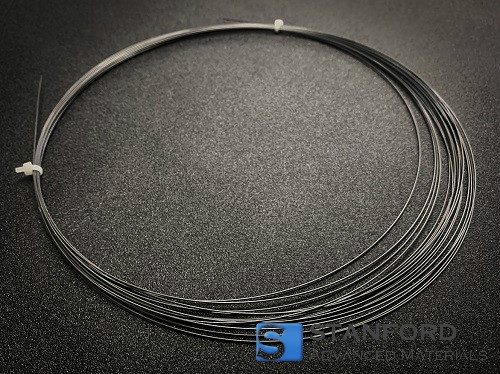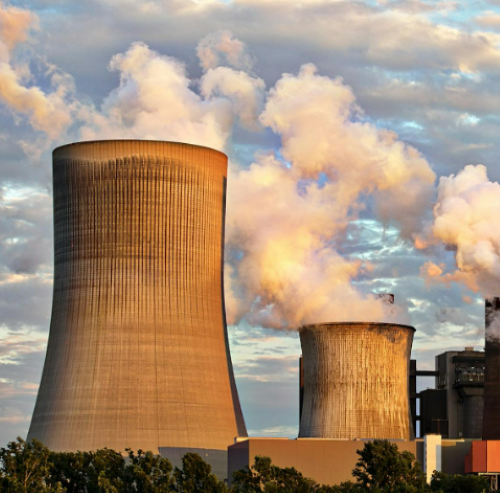Tungsten-Rhenium Alloy: A Comprehensive Guide
Introduction
Tungsten–rhenium alloys (W-Re) are high-performance materials that combine the characteristics of tungsten (W) and rhenium (Re). They possess high temperature stability, mechanical strength and resistance to aggressive environments. This guide provides an overview of the properties, production methods, applications and potential future developments of tungsten–rhenium alloys.

Properties of Tungsten–Rhenium Alloys
Tungsten–rhenium alloys (W-Re) exhibit a combination of features derived from both tungsten and rhenium.
- High Melting Point: Tungsten has a melting point of approximately 3 422°C and rhenium melts at about 3 180°C. Consequently, the alloy has a melting point that permits its use at elevated temperatures.
- Mechanical Strength and Ductility: Pure tungsten is strong but can be brittle. The addition of rhenium increases ductility, thereby reducing brittleness and improving load-bearing performance.
- Thermal Stability: The alloy maintains its structural integrity and strength at high temperatures, which is essential for applications in environments with elevated thermal conditions.
- Corrosion and Oxidation Resistance: The alloy demonstrates resistance to chemical attack and oxidation even at high temperatures, ensuring its suitability in chemically aggressive settings.
- Electrical Conductivity: The alloy conducts electricity more efficiently than pure tungsten. This property makes it appropriate for various electronic and electrical applications.
Production Methods
The production of tungsten–rhenium alloys is generally carried out using powder metallurgy techniques. The process comprises the following steps:

- Powder Preparation: High-purity tungsten and rhenium powders are produced. The powders must be fine and uniform to ensure the quality of the final alloy.
- Mixing: The tungsten and rhenium powders are blended in a defined ratio. Typically, the rhenium content varies between 3 and 26 weight per cent depending on the targeted properties.
- Compaction: The mixed powder is compacted under high pressure to achieve the desired shape. This step ensures the necessary density and homogeneity.
- Sintering: The compacted material is sintered at elevated temperatures in a controlled atmosphere. Sintering promotes particle bonding and improves the mechanical properties of the alloy.
- Warm Working: After sintering, the material may be subjected to warm working processes such as forging or rolling. These processes refine the microstructure and mechanical properties.
- Machining and Finishing: The sintered and worked alloy is further processed to meet the precise specifications of its intended application.
Applications of Tungsten–Rhenium Alloys
The specified combination of properties in tungsten–rhenium alloys allows their use in several industrial and research sectors:
1. Aerospace and Defence: The alloys are used in components that are expected to operate at high temperatures and under substantial mechanical loads. Applications include rocket nozzles, engine parts and thermocouples used in propulsion systems.

2. Electronics: Tungsten–rhenium alloys are employed in thermocouples for industrial temperature measurements. Their electrical conductivity and thermal stability also support uses in electrical contacts, filaments and X‑ray tube components.
3. Medical Devices: In the medical field, tungsten–rhenium alloys are used for radiation shielding, collimators and other applications where high density is required. They serve in imaging and therapeutic equipment.
4. Industrial Processes: The alloys are suitable for high temperature furnaces and components in heated zones. They are also used for tools and moulds in the glass and metal processing industries.
5. Nuclear Applications: Given the resistance to radiation and high temperatures, tungsten–rhenium alloys are utilised in nuclear reactors, radiation shielding and other nuclear technologies.

Future Potential and Developments
Ongoing progress in materials science and engineering is focused on optimising tungsten–rhenium alloys. Research is addressing methods to meet the increasing requirements of modern technology and industry. The following aspects are being investigated:
- Improved Alloy Compositions: Investigations involve new compositions and processing methods. These efforts aim to quantifiably enhance mechanical properties, thermal stability and resistance to corrosion.
- Additive Manufacturing: The application of additive manufacturing techniques (3D printing) may allow the production of complex geometries and customised components. This approach could reduce waste and increase dimensional precision.
- Advanced Coatings: Development of targeted surface treatments and coatings may further improve the performance of tungsten–rhenium components in rigorous conditions.
- Nanostructured Alloys: Incorporating nanotechnology into the production of tungsten–rhenium alloys may result in materials with increased strength and improved thermal and electrical performance.
Conclusion
Tungsten–rhenium alloys represent a class of materials that are used in high temperature, load-bearing and corrosive environments. Their applications include aerospace, electronics, medical devices and nuclear technology. As research and development continue, tungsten–rhenium alloys are expected to play an increasing role in material science and engineering, thereby supporting technological progress.
Tungsten–rhenium alloys are produced and supplied by Stanford Advanced Materials (SAM). Stanford Advanced Materials (SAM) possesses extensive expertise in the manufacture of tungsten–rhenium alloy products that conform to specific application requirements. Please send an enquiry if you require further information.

 Bars
Bars
 Beads & Spheres
Beads & Spheres
 Bolts & Nuts
Bolts & Nuts
 Crucibles
Crucibles
 Discs
Discs
 Fibers & Fabrics
Fibers & Fabrics
 Films
Films
 Flake
Flake
 Foams
Foams
 Foil
Foil
 Granules
Granules
 Honeycombs
Honeycombs
 Ink
Ink
 Laminate
Laminate
 Lumps
Lumps
 Meshes
Meshes
 Metallised Film
Metallised Film
 Plate
Plate
 Powders
Powders
 Rod
Rod
 Sheets
Sheets
 Single Crystals
Single Crystals
 Sputtering Target
Sputtering Target
 Tubes
Tubes
 Washer
Washer
 Wires
Wires
 Converters & Calculators
Converters & Calculators
 Chin Trento
Chin Trento



